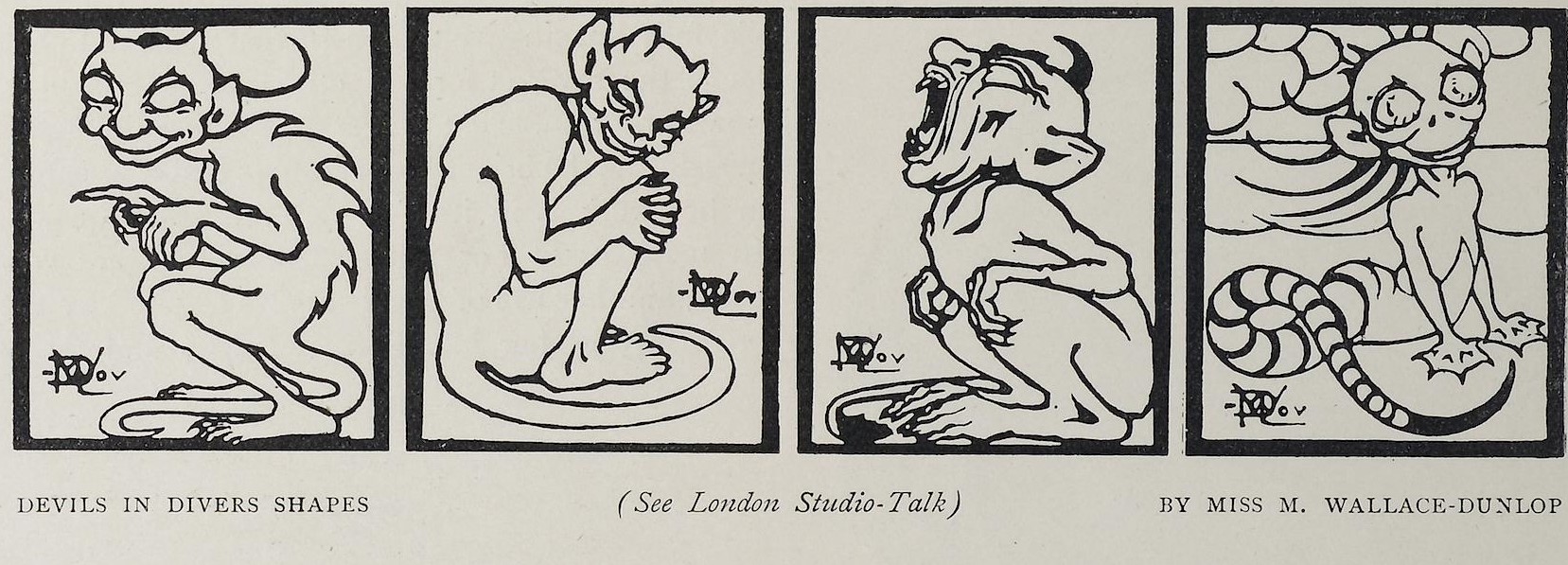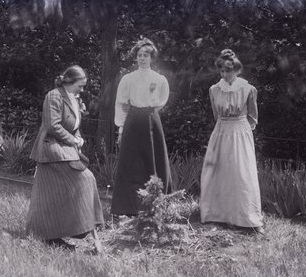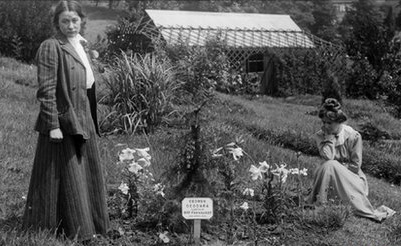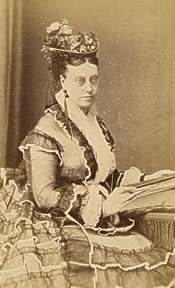|
Marion Wallace-Dunlop
Marion Wallace Dunlop (22 December 1864 – 12 September 1942) was a Scottish artist and author. She was the first and one of the most well known British suffragettes to go on hunger strike, on 5 July 1909, after being arrested in July 1909 for militancy.''The Militant Suffrage Movement : Citizenship and Resistance in Britain'', by Laura E. Nym Mayhall, Assistant Professor of History Catholic University of America She said she would not take any food unless she was treated as a political prisoner instead of as a common criminal. Wallace Dunlop's mode of protest influenced suffragettes after her and other leaders like M. K. Gandhi and James Connolly, who also used fasting to protest British rule. She was at the centre of the Women's Social and Political Union and designed processions and banners for them. Biography Wallace Dunlop was born at Leys Castle, Inverness, Scotland, on 22 December 1864, the daughter of Robert Henry Wallace Dunlop and his second wife, Lucy Wallace Dun ... [...More Info...] [...Related Items...] OR: [Wikipedia] [Google] [Baidu] |
Inverness
Inverness (; from the gd, Inbhir Nis , meaning "Mouth of the River Ness"; sco, Innerness) is a city in the Scottish Highlands. It is the administrative centre for The Highland Council and is regarded as the capital of the Highlands. Historically it served as the county town of the county of Inverness-shire. Inverness lies near two important battle sites: the 11th-century battle of Blàr nam Fèinne against Norway which took place on the Aird, and the 18th century Battle of Culloden which took place on Culloden Moor. It is the northernmost city in the United Kingdom and lies within the Great Glen (Gleann Mòr) at its northeastern extremity where the River Ness enters the Beauly Firth. At the latest, a settlement was established by the 6th century with the first royal charter being granted by Dabíd mac Maíl Choluim (King David I) in the 12th century. Inverness and Inverness-shire are closely linked to various influential clans, including Clan Mackintosh, Clan Fraser and Cl ... [...More Info...] [...Related Items...] OR: [Wikipedia] [Google] [Baidu] |
Home Secretary
The secretary of state for the Home Department, otherwise known as the home secretary, is a senior minister of the Crown in the Government of the United Kingdom. The home secretary leads the Home Office, and is responsible for all national security, policing and immigration policies of the United Kingdom. As a Great Office of State, the home secretary is one of the most senior and influential ministers in the government. The incumbent is a statutory member of the British Cabinet and National Security Council. The position, which may be known as interior minister in other nations, was created in 1782, though its responsibilities have changed many times. Past office holders have included the prime ministers Lord North, Robert Peel, the Duke of Wellington, Lord Palmerston, Winston Churchill, James Callaghan and Theresa May. In 2007, Jacqui Smith became the first female home secretary. The incumbent home secretary is Suella Braverman. The office holder works alongside the ot ... [...More Info...] [...Related Items...] OR: [Wikipedia] [Google] [Baidu] |
1864 Births
Events January–March * January 13 – American songwriter Stephen Foster ("Oh! Susanna", "Old Folks at Home") dies aged 37 in New York City, leaving a scrap of paper reading "Dear friends and gentle hearts". His parlor song " Beautiful Dreamer" is published in March. * January 16 – Denmark rejects an Austrian-Prussian ultimatum to repeal the Danish Constitution, which says that Schleswig-Holstein is part of Denmark. * January 21 – New Zealand Wars: The Tauranga campaign begins. * February – John Wisden publishes '' The Cricketer's Almanack for the year 1864'' in England; it will go on to become the major annual cricket reference publication. * February 1 – Danish-Prussian War (Second Schleswig War): 57,000 Austrian and Prussian troops cross the Eider River into Denmark. * February 15 – Heineken brewery founded in Netherlands. * February 17 – American Civil War: The tiny Confederate hand-propelled submarine ''H. L. Hunl ... [...More Info...] [...Related Items...] OR: [Wikipedia] [Google] [Baidu] |
Women's Suffrage In The United Kingdom
A movement to fight for women's right to vote in the United Kingdom finally succeeded through acts of Parliament in 1918 and 1928. It became a national movement in the Victorian era. Women were not explicitly banned from voting in Great Britain until the Reform Act 1832 and the Municipal Corporations Act 1835. In 1872 the fight for women's suffrage became a national movement with the formation of the National Society for Women's Suffrage and later the more influential National Union of Women's Suffrage Societies (NUWSS). As well as in England, women's suffrage movements in Wales, Scotland and other parts of the United Kingdom gained momentum. The movements shifted sentiments in favour of woman suffrage by 1906. It was at this point that the militant campaign began with the formation of the Women's Social and Political Union (WSPU). The outbreak of the First World War in 1914 led to a suspension of party politics, including the militant suffragette campaigns. Lobbying did take ... [...More Info...] [...Related Items...] OR: [Wikipedia] [Google] [Baidu] |
Arizona Silver Belt
The ''Arizona Silver Belt'' is a newspaper in Globe, Arizona Globe ( apw, Bésh Baa Gowąh "Place of Metal") is a city in Gila County, Arizona, United States. As of the 2020 census, the population of the city was 7,249. The city is the county seat of Gila County. Globe was founded c. 1875 as a mining ca .... It has been published since May 2, 1878. It is owned by News Media Corporation, who acquired it from GateHouse Media in 2008. In 1906, editor Joseph H. Hamill increased publication to a daily newspaper and changed the title to the Daily Arizona Silver Belt. The title was later changed back to the Arizona Silver Belt. References External links Official website {{News Media Corporation Newspapers published in Arizona ... [...More Info...] [...Related Items...] OR: [Wikipedia] [Google] [Baidu] |
Eagle House (suffragette's Rest)
Eagle House is a Grade II* listed building in Batheaston, Somerset, near Bath. Before World War I the house had extensive grounds. When Emily Blathwayt and her husband Colonel Linley Blathwayt owned the house, its summerhouse was used, from 1909 to 1912, as a refuge for suffragettes who had been released from prison after hunger strikes. It became known as the Suffragette's Rest or Suffragette's Retreat. Emily Blathwayt was a suffragette and member of the Women's Social and Political Union. Between April 1909 and July 1911, trees were planted in the grounds to commemorate individual suffragettes; at least 47 were planted in a two-acre (8094 m2) site. Known as Annie's Arboretum, after Annie Kenney, the trees were destroyed in the 1960s when a council estate was built. Only one tree, an Australian Pine planted in 1909 by Rose Lamartine Yates, remains. Architecture and history The two-storey bath stone house has ashlar quoins and a slate roof. There is an ionic doorcase with ... [...More Info...] [...Related Items...] OR: [Wikipedia] [Google] [Baidu] |
Mary Blathwayt
Mary Blathwayt (1 February 1879 – 25 June 1961) was a British feminist, suffragette and social reformer. She lived at Eagle House in Somerset. This house became known as the "Suffragette's Rest" and contained a memorial to the protests of 60 suffragists and suffragettes. The memorial was bulldozed in the 1960s. Early life Mary Blathwayt was born 1 February 1879 in Worthing, Sussex, the daughter of Colonel Linley Blathwayt, an army officer who had served in India, and his wife, Emily, who were first cousins. Upon retiring from active service, Colonel Blathwayt and his family moved from India to Eagle House, Batheaston, on the outskirts of Bath. Her younger brother, William, trained as an electrical engineer and taught English in Germany for many years before returning to England at the beginning of the First World War. Mary, remained at home and attended Bath High School. Campaigning for women's suffrage Blathwayt and her mother started attending meetings of t ... [...More Info...] [...Related Items...] OR: [Wikipedia] [Google] [Baidu] |
Florence Haig
Florence Eliza Haig (1856–1952) was a Scottish artist and suffragette who was decorated for imprisonments and hunger strikes. Biography Haig was born in 1856. Her father was a Berwickshire barrister and she had two sisters, Cecilia and Evelyn. Her cousin Douglas Haig went on to be Douglas Haig, 1st Earl Haig, Field Marshal Haig in 1915. She was an artist and her pastel of the physicist John Tyndall was photographed and a copy is in the National Portrait Gallery (London), National Portrait gallery. Her involvement with the women's suffrage movement started with a £1 donation in 1901 to the National Union of Women's Suffrage Societies. She made another in 1907 but in February she was attracted to the rival Women's Social and Political Union. This was a more militant organisation led by the Emmeline Pankhurst. Haig she saw them in action at the "Women's Parliament" which was held on 24 February 1907 at Caxton Hall. Haig and her sister, Evelyn, started a local branch of the W ... [...More Info...] [...Related Items...] OR: [Wikipedia] [Google] [Baidu] |
Kitty Kenney
Caroline "Kitty" Kenney (1880 – 1952) was a sister of Annie Kenney, one of the most well-known British suffragettes to go on hunger strike,''The Militant Suffrage Movement : Citizenship and Resistance in Britain'', by Laura E. Nym Mayhall, Assistant Professor of History, Catholic University of America for whom the Emily Blathwayt, Blathwayts planted commemorative trees in their Eagle House (suffragette's rest), Eagle House garden in Batheaston, Batheaston, Somerset. Another sister, Jessie Kenney, Jessie, was abroad when her involvement in explosives was discovered by the authorities. Biography Caroline (Kitty) was the sixth child of 12 siblings, 11 of whom survived infancy, and one of the seven daughters of Horatio Nelson Kenney (1849–1912) and Anne Wood (1852–1905). Her sisters included Nell Kenney, Sarah (Nell), Ann (Annie), Jessie Kenney, Jessica (Jessie), Alice and Jenny (Jane) Kenney, Jane (Jennie). Annie and Jessie took leading roles in the Women's Social and Politi ... [...More Info...] [...Related Items...] OR: [Wikipedia] [Google] [Baidu] |
Annie Kenney
Ann "Annie" Kenney (13 September 1879 – 9 July 1953) was an English working-class suffragette and socialist feminist who became a leading figure in the Women's Social and Political Union. She co-founded its first branch in London with Minnie Baldock. Kenney attracted the attention of the press and public in 1905 when she and Christabel Pankhurst were imprisoned for several days for assault and obstruction related to the questioning of Sir Edward Grey at a Liberal rally in Manchester on the issue of votes for women. The incident is credited with inaugurating a new phase in the struggle for women's suffrage in the UK with the adoption of militant tactics. Annie had friendships with Emmeline Pethick-Lawrence, Baroness Pethick-Lawrence, Mary Blathwayt, Clara Codd, Adela Pankhurst, and Christabel Pankhurst. Early life Kenney was born in 1879 in Springhead, West Riding of Yorkshire., to Horatio Nelson Kenney (1849–1912) and Anne Wood (1852–1905). She was the fourth daughter in ... [...More Info...] [...Related Items...] OR: [Wikipedia] [Google] [Baidu] |
Emmeline Pankhurst
Emmeline Pankhurst ('' née'' Goulden; 15 July 1858 – 14 June 1928) was an English political activist who organised the UK suffragette movement and helped women win the right to vote. In 1999, ''Time'' named her as one of the 100 Most Important People of the 20th Century, stating that "she shaped an idea of objects for our time" and "shook society into a new pattern from which there could be no going back". She was widely criticised for her militant tactics, and historians disagree about their effectiveness, but her work is recognised as a crucial element in achieving women's suffrage in the United Kingdom. Born in the Moss Side district of Manchester to politically active parents, Pankhurst was introduced at the age of 14 to the women's suffrage movement. She founded and became involved with the Women's Franchise League, which advocated suffrage for both married and unmarried women. When that organisation broke apart, she tried to join the left-leaning Independent Labour P ... [...More Info...] [...Related Items...] OR: [Wikipedia] [Google] [Baidu] |
Hunger Strike Medal
The Hunger Strike Medal was a silver medal awarded between August 1909 and 1914 to suffragette prisoners by the leadership of the Women's Social and Political Union (WSPU). During their imprisonment, they went on hunger strike while serving their sentences in the prisons of the United Kingdom for acts of militancy in their campaign for women's suffrage. Many women were force-fed and their individual medals were created to reflect this. The WSPU awarded a range of military-style campaign medals to raise morale and encourage continued loyalty and commitment to the cause. The Hunger Strike Medals were designed by Sylvia Pankhurst and first presented by leadership of the WSPU at a ceremony in early August 1909 to women who had gone on hunger strike while serving a prison sentence. Later the medals would be presented at a breakfast reception on a woman's release from prison. Background On 5 July 1909, suffragette Marion Wallace Dunlop began her hunger strike in Holloway Prison. S ... [...More Info...] [...Related Items...] OR: [Wikipedia] [Google] [Baidu] |











